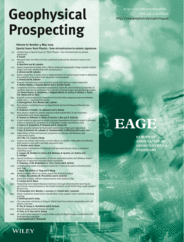
Full text loading...
 , Per Avseth3,4
, Per Avseth3,4 , Tor Arne Johansen1,5,6, Richard Olstad7
, Tor Arne Johansen1,5,6, Richard Olstad7
Understanding how physical properties and seismic signatures of present day rocks are related to ancient geological processes is important for enhanced reservoir characterization. In this paper, we have studied this relationship for the Kobbe Formation sandstone in the Barents Sea. These rocks show anomalous low shear velocities and high VP/VS ratios, which does not agree well with conventional rock physics models for moderately to well consolidated sandstones. These sandstones have been buried relatively deeply and subsequently uplifted 1–2 km. We compared well log data of the Kobbe sandstone with velocity–depth trends modelled by integrating basin modelling principles and rock physics. We found that more accurate velocity predictions were obtained when first honouring mechanical and chemical compaction during burial, followed by generation of micro‐cracks during uplift. We suspect that these micro‐cracks are formed as overburden is eroded, leading to changes in the subsurface stress‐field. Moreover, the Kobbe Formation is typically heterogeneous and characterized by structural clays and mica that can reduce the rigidity of grain contacts. By accounting for depositional and burial history, our velocity predictions become more consistent with geophysical observables. Our approach yields more robust velocity predictions, which are important in prospect risking and net erosion estimates.

Article metrics loading...

Full text loading...
References


Data & Media loading...

